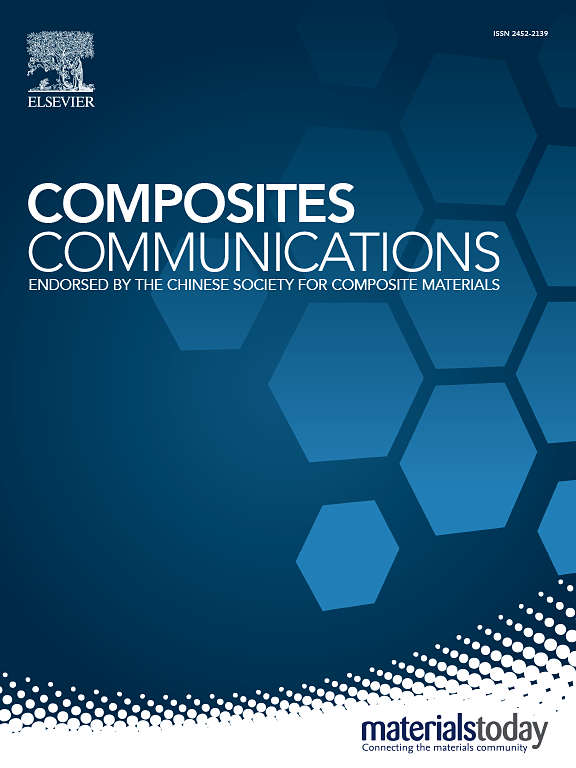Scalable and simply-fabricated paint for waterproof and passive radiative cooling
IF 6.5
2区 材料科学
Q1 MATERIALS SCIENCE, COMPOSITES
引用次数: 0
Abstract
Radiative cooling paint (RCP) has aroused great interest because of its high cooling performance and the simple processing process. However, the large-scale application of RCP is still limited by its poor cooling durability, which is related to a contaminated surface outdoors. Here, we proposed a superhydrophobic thermoplastic urethane (TPU)/BaSO4/SiO2 paint with a water contact angle of 150.6° that remained a sustainable clean surface to maintain its excellent cooling effect. The high electron band gap of BaSO4, the appropriate and broad particle size distribution, and the abundant TPU/BaSO4/SiO2 interfaces dramatically promoted its sunlight reflectivity to 94.3 %. With the phonon resonance of BaSO4 and SiO2 at 9 μm, and the chains asymmetrical stretching resonance of TPU, the TPU/BaSO4/SiO2 coating reached a high IR emissivity of 93.9 %. Field tests indicated that the optimized TPU/BaSO4 coating cooled the substrate by 24.3 °C, and the sub-ambient cooling effect reached 13.2 °C. Besides, the cooling power of the TPU/BaSO4 membrane reached 108.8 W/m2 at high noon and exceeded 200 W/m2 when the temperature difference between the object and surroundings reached 20 °C. Additionally, the IR emissivity of the TPU/BaSO4/SiO2 coating remained 84.7 % even at an incident angle of 80°, so the cooling effect preserved a whole day. Our work provided a new design for high-performance passive radiative cooling materials with outstanding waterproof and self-cleaning properties.

求助全文
约1分钟内获得全文
求助全文
来源期刊

Composites Communications
Materials Science-Ceramics and Composites
CiteScore
12.10
自引率
10.00%
发文量
340
审稿时长
36 days
期刊介绍:
Composites Communications (Compos. Commun.) is a peer-reviewed journal publishing short communications and letters on the latest advances in composites science and technology. With a rapid review and publication process, its goal is to disseminate new knowledge promptly within the composites community. The journal welcomes manuscripts presenting creative concepts and new findings in design, state-of-the-art approaches in processing, synthesis, characterization, and mechanics modeling. In addition to traditional fiber-/particulate-reinforced engineering composites, it encourages submissions on composites with exceptional physical, mechanical, and fracture properties, as well as those with unique functions and significant application potential. This includes biomimetic and bio-inspired composites for biomedical applications, functional nano-composites for thermal management and energy applications, and composites designed for extreme service environments.
 求助内容:
求助内容: 应助结果提醒方式:
应助结果提醒方式:


